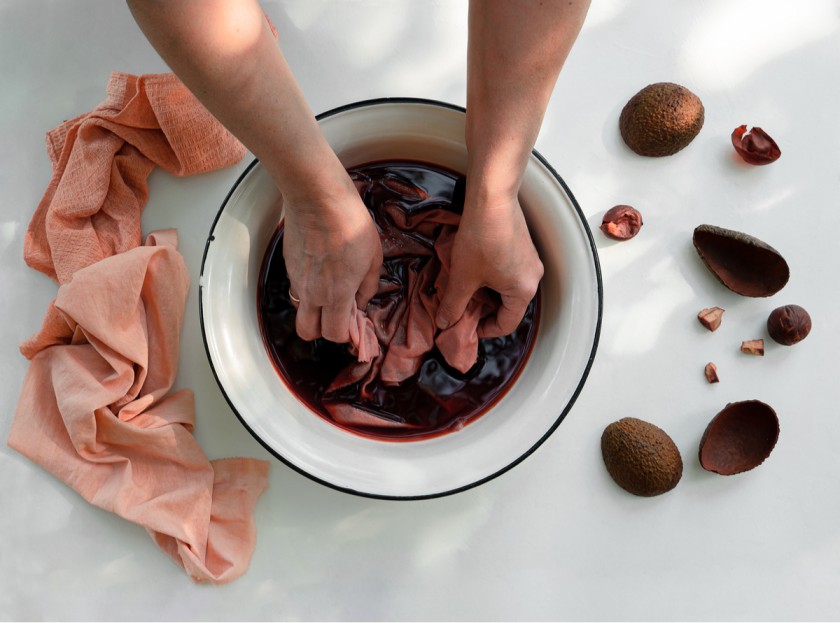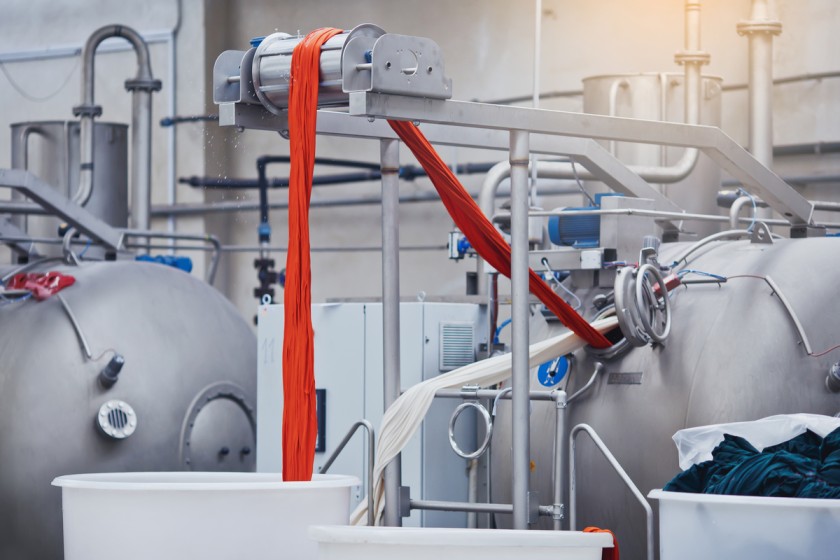The Fashion Sector And Sustainable Dyeing Processes That Will Take Over The Industry In 2022



The fashion industry has emerged to be the second most pollution-emitting industry globally. One of the major contributors to this pollution is synthetic dyes. According to stats, fabric dye processes are held accountable for almost 20% of the global water pollution. This problem is getting more severe with the use of toxic agents for the textile's colorant fixation process, the use of petroleum-based non-biodegradable colorants for the dyeing textiles, and the uncontrolled release of these fixation agents and colorants in large amounts into the ecosystem.
After the enactment of tough new legislation in China, almost every company involved in the manufacturing of synthetic fabric dyes had to shut down its operations. Given such closures and more effective and strict environmental laws and regulations, the fashion sector has now shifted its focus to more eco-friendly solutions for the coloration of clothes. The best alternative to synthetic colorants for avoiding environmental concerns is using biodegradable plant sources and extracting natural colors from them. However, the need for these harmful fixation agents still remains a necessity for its use with the colorants.
Overall, the fashion and textile industries are now looking for other dyeing methods. This article gives valuable insight into the eco-friendly techniques used by innovative brands and companies to fabric dye clothes. Before that, take a look at the brief yet detailed section on the problems related to conventional dyeing practices.
Conventional Dyeing Processes: Problems Associated With It
1. Pollution
The usage of synthetic fabric dyestuffs results in adverse impacts on the ecosystem. The textile dyeing water becomes extremely harmful with the inclusion of nitrates, soaping chemicals, chromium-based materials, vat dyestuffs, acetic acid, enzymatic substrates, and other dyeing ingredients. Other harmful and toxic chemicals used in the fabric dye process involve chlorine-based stain removers, formaldehyde-based color fixing auxiliaries, hydrocarbon softeners, and other non-biodegradable contributory. About 60-80% of all fabric dyes are AZO dyes, also known as carcinogens. For dyeing polyester, textiles commonly use chlorobenzenes, which are toxic to human life.
2. Water and Energy Consumption
Another significant issue related to the synthetic dyeing process is excessive water consumption. The process of dyeing cotton is explicitly water-intensive. That's because the process of dyeing and finishing the cotton is estimated to use about 125 liters of water for every kilo of cotton fibers. Apart from the need for vast volumes of water, the process of cotton fabric dyeing also depends on considerable amounts of energy for heating the water to produce steam, which is needed for the desired textile finish.
3. Upsurge Demand for Change
With the rapid awareness of the harmful effects of the conventional dyeing processes, new sustainable technologies are making their way into the fashion and textile industries for more resource-efficient, cost-effective, and eco-friendly dyeing solutions. Latest innovations in dyeing processes involve a range of technologies, from pressurized CO2 dye application pretreatment of cotton to the newly added creation of microbes-derived natural pigments. With these latest dyeing innovations, there will be minimal water usage, minimal impact on the ecosystem, and replacement of these wasteful practices with more cost-effective and efficient ones.
Latest Sustainable Dyeing Processes That Will Take Over The Industry

1. Hybrid Pigments
With expertise in textile chemical solutions, Ecofoot has developed and introduced hybrid pigments. The hybrid pigments are made of a dye, which is chemically associated with a polymer particle. At a low temperature of 25ºC, this particle reacts with the cellulose fibers. This fiber and polymer technology doesn't involve any usage of salt, which or else is essential to drive the fabric dye. This technology can be used at low temperatures for dyeing cotton fabrics and can also be used to dye wool through a way more ecological process.
It's imperative to know that Ecofoot-Indigo is one of the most effective hybrid pigments used for dyeing denim. This technology avoids any usage of toxic fixation agents, which is otherwise conventionally used for converting indigo pigment into a liquid state. The common reducing or fixation agents are not good for the environment. The sulfate and sulfite formed in the dyebath may result in several issues when discharged in wastewater bodies.
With the development of auxiliaries, Ecofoot avoids hydrolysis of the fabric dye during the dyeing process. Without these auxiliaries, the process would've needed rough washing-off processes to remove the hydrolyzed dye. Auxiliaries and hybrid pigments help save about 50% of water in the entire dyeing process.
2. Powder Dyes for Fabrics and Garments
An Italy-based company named Officina+39 has used recycled clothing, textile scraps, and fiber material to develop the sustainable dye range Recycrom. With the patent-pending, this company has come up with a worldly eight-step system, which involves the crystallization of all the fabric fibers to produce an extremely fine powder. This powder can be utilized as the pigment fabric dye for garments made of nylon, wool, cotton, or any natural fiber. Fabrics that use various methods like dipping, exhaustion dyeing, coating, screen printing, and spraying can get immense benefit with the application of Recycrom. While most dyes are used as chemical solutions, the Recycrom is used as a suspension. Thus, it can be easily filtered from the water and reduce the environmental hazards of synthetic dyes.
3. Cotton Pretreatment

Compared to other textiles, cotton requires more water for the dyeing process. Around 200 liters of water is needed for producing about 1 kilogram of cotton fabric. However, with the innovation of a pretreatment process known as ECOFAST Pure by a company named Dow, things have changed.
This pretreatment technology can be used to produce cationic cotton by applying the technique before the dyeing process. A permanent positive charge is required by the pretreated cotton as it helps to retain a higher affinity for dyes, which have negatively charged molecules. With a 50% decrease in the use of fabric dye and water, this patented technology is an evolution to the cotton dyeing process.
Also, innovative technology by ColorZen has enabled the pretreatment of raw cotton fibers. This technology uses a solution consisting of caustic soda, a wetting agent, and ammonium salt. The pretreated cotton shows an enhanced ability to hold on to the dye without any need for fixation agents. Thus, it helps in reducing the need and usage of toxic chemicals by 90% and reduces 90% water wastage.
4. Natural or Engineered Microbes
With the introduction of a synthetic biological approach, the company Colorfix uses bacteria for the coloration of textiles. It helps in the reduction of water usage by up to ten times. This process involves the innovative steps of fixing the dye-producing bacteria in the fabric directly. It's done with the help of a carbon-source solution, along with the deposition and fixation of the fabric dye with one heating cycle. The technology doesn't need the dye extraction process, which otherwise would have used organic solvents or fixation agents consisting of organic compounds.
Moreover, researchers from the University of California are carrying out the development of denim dyes with the use of E.coli bacteria, which has been genetically modified. This is done to produce indican, which can be converted into indigo with the help of enzymatic treatment. With this new process, there will be no need for the harsh chemical fixation agents involved in the indigo dye solubilization. However, for sustainability, this process still needs to be more optimized in the indican recovery process.
5. Auxiliaries and Innovative Dyes
Avitera is a textile innovation introduced by the Huntsman Textile Effects. Avitera is a series of polyreactive fabric dyes that readily bonds to other fibers. This Avitera dye uses tri-functional reactivity for a high fixation rate along with cellulosic fiber, barring a few unfixed dyes for removal. This significantly reduces the water and energy consumption by up to 50% while using up to 20% less salt. Moreover, the Huntsman Corporation has recently innovated the diffusion accelerant named Univadine E3-3D. It is a dyeing auxiliary that improves the diffusion of a dye into the polyester.
6. Digital Printing
With the introduction of the new 'waterless' textile printing technology by Intech Digital, the textile industry can see a bright future ahead. This technology uses BlackJet reactive nano pigment textile inks for ensuring coloration. The BlackJet textile inks utilize a pigment, which is highly insoluble in the ink carrier than a dye. The pigment particles adhere to the fabric with the help of its resin binders. The technology comprises a four-step process involving fabric pretreatment, digital printing with pigment inks, fabric heating, and post-treatment processes.
Final Words
Although these sustainable dyeing processes are eco-friendly and highly promising, they still have some barriers to overcome. With the advent of more innovative technologies and research, sooner or later, these barriers will be removed, and all these sustainable processes will become the future of the textile and fashion industry.
For clothing braids that have taken a step forward to a greener clothing production, they can source with these innovative companies to leverage their advanced and sustainable technologies. They can connect with these companies to source their fabrics that follow the latest sustainable dyeing technology. One of these unique platforms is Fashinza, as their fabrics have undergone the unique process of sustainable dyeing. So, with the increasing environmental awareness, it's time to become aware of harmful dyeing processes and adapt to sustainable ones.



















